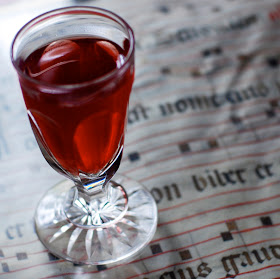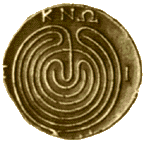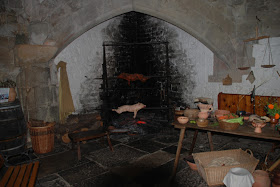Most people know Lacock Abbey as a location for the stratospherically successful Harry Potter movies.
Lacock Abbey was owned by the Talbot family for generations, beginning shortly after the Dissolution of the Monasteries when it was turned into a private house in 1539. The abbey had occupied the space since 1232 and the beautiful village of Lacock was part of the estate. Matilda Talbot (grand-niece of H. Fox-Talbot) gifted the village and the abbey to the National Trust in 1944.
H. Fox-Talbot photograph, 1844
It is because of this gift that Lacock Village has been the location for Pride and Prejudice, Cranford, Emma and so many other wonderful BBC productions as well as the location for Harry Potter’s parents’ house.
No wonder it is such a popular place to film, the village has a gentle, timeless quality. There are no antennas or overhead wires to mar the fabulously preserved 15th to 18th century buildings.
But there is much more to Lacock than just a great place to film. This is where H. Fox-Talbot did something remarkable--and without Talbot’s work-- there might never have been filming anywhere.
You see, before movies or television-- even before Edison and Lumiere invented moving pictures, there was Talbot, the owner of Lacock (a true polymath who was also interested in astronomy, botany, chemistry, and mathematics, philosophy, philology Egyptology, and art history) Henry Fox-Talbot, one of the pioneers of photography.
It so happens that 175 years ago, the first photographic negative was created by H. Fox-Talbot at his ancestral home, Lacock Abbey. The negative allowed copies to be made of images. Before his discovery, only single images could be made.
Today, there is a museum on the estate that explores his achievement and includes fascinating displays of some of the devices that made it possible.
1835 Negative
William Henry Fox-Talbot was something of a wonder. He worked on all variety of devices but was most known for his work at the dawn of photography. He first called his process “photogenic drawing” but then decided on “calotype” from the Greek, kalos, for beautiful… and so they are, from the first moment I saw his photographs in the book The Photographic Art of William Henry Fox Talbot , I was in love. It was as if you were eavesdropping on time… you weren’t supposed to see these images just yet (this is a quality I love in film and music…sends chills).
, I was in love. It was as if you were eavesdropping on time… you weren’t supposed to see these images just yet (this is a quality I love in film and music…sends chills).
Twenty-four of them were collected by Talbot in 6 volumes published between 1844-46 entitled “The Pencil of Nature”, that spoke of the poetry and science of his discovery.
Trafalgar Square, 1844
Articles of Glass, 1844
I thought of Fox-Talbot, a Victorian-age alchemist performing a new magic with chemicals and light in his ancient studio and decided a drink was in order … a little mixology to honor Talbot and the anniversary of his achievement. The beautiful collection of decanters in his photograph, “Articles of Glass” made me think of Sherry. I went looking through the 1869 book, Cooling Cups and Dainty Drinks 1869 Reprint and the Sherry Cup #11 caught my eye. As I was staying in England just days before the celebration of National Cherry Day in the UK (July 17th), cherries seemed a perfect ingredient (and I love them truly madly deeply!).
and the Sherry Cup #11 caught my eye. As I was staying in England just days before the celebration of National Cherry Day in the UK (July 17th), cherries seemed a perfect ingredient (and I love them truly madly deeply!).
The drink is a smashing combination of sherry and cherry shrub with lemon and soda. Sarah from All our Fingers in the Pie made a rhubarb shrub with great results… I was dying to try a cherry shrub. I found a recipe for it in Jerry Thomas’ 1862 classic, The Bartender's Guide (although the same recipe appears in an 1855 cookbook by Mrs. A.L.Webster!!!). The shrub is also great with wine or champagne (like a cherry kir)
(although the same recipe appears in an 1855 cookbook by Mrs. A.L.Webster!!!). The shrub is also great with wine or champagne (like a cherry kir)
Here’s a crimson toast to Mr. Fox-Talbot and his invention!
Sherry Cup #11 for 2
3/4 c dry sherry (or white wine or sparkling wine)
3-4 T cherry shrub* (to taste)
splash soda
squeeze of lemon to taste.
ice
Add the sherry, cherry shrub and soda together and squeeze lemon into the mix. Taste it and add more cherry or lemon as desired. Serve over ice. The original asks for a bottle of soda or a bottle of lemonade.
*FOR CHILDREN: Make the shrub sans alcohol… but it will not keep so must be used quickly. Use ginger ale or sparkling lemonade instead of soda and wine with more of the cherry mixture and you have a lovely healthy cherry drink!
*Cherry Shrub
“Pick ripe acid cherries from the stem, put them in an earthen pot; place that in an iron pot of water; boil till the juice is extracted; strain it through a cloth thick enough to retain the pulp, and sweeten it to your taste. When perfectly clear, bottle it, sealing the cork. By first putting a gill {1/2 cup} of brandy into each bottle, it will keep through the summer. It is delicious mixed with water. Irish or Monongahela whiskey will answer instead of the brandy, though not as good”
4 c of cherries makes 1 ½ c of liquid so add ¼ c of brandy to that
When you put the shrub and the rest together it makes a great drink!






























































